The Sri Lankan military and police violently attacked hundreds of people, and later rounded up thousands of residents at Mattakkuliya in northern Colombo last weekend.
The assault began on Saturday night after several hundred people protested against the beating of a youth arrested by police. More than 1,000 security personnel, including soldiers and police riot squads, were deployed against the local people.
Next morning, some 8,000 residents were marched to an open field where hooded men pointed out more than 200 people, who were then taken into police custody.
The military-police operation marks a new stage of repressive measures against working people and youth by President Mahinda Rajapakse’s government. It is yet another demonstration of emerging police-state rule in Sri Lanka.
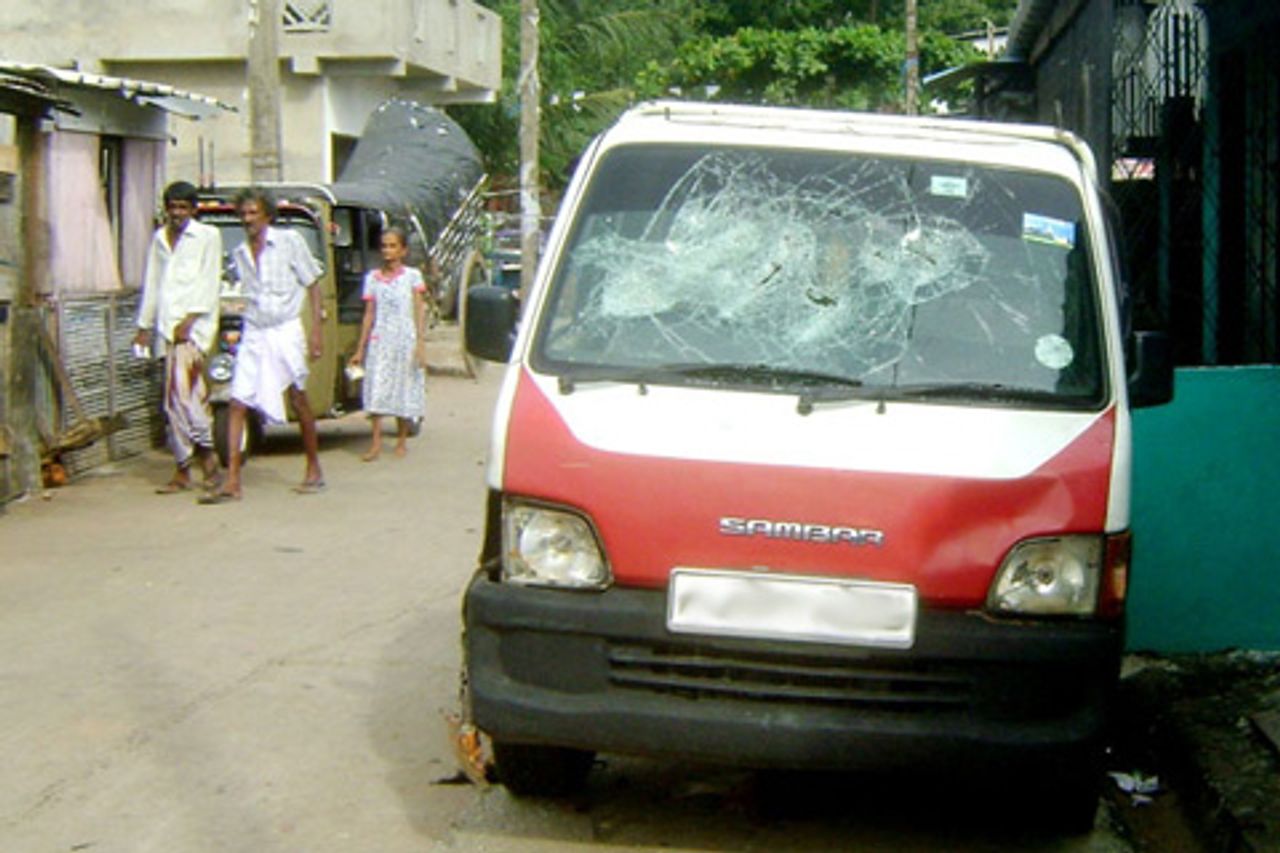 Damaged van
Damaged vanWhen WSWS reporters visited Mattakkuliya on Tuesday and Thursday the scars were still visible. Every entrance to the area remained guarded by armed troops. Damaged vehicles with broken glass littered the streets. Broken windows and doors showed the viciousness of the security forces’ assault on residents’ homes. In some houses almost everything, including TVs, refrigerators and furniture, was damaged beyond repair. Many residents were very angry and some deeply traumatised.
Details provided by local residents indicate that Mattakkuliya police officers launched a provocation designed to create a justification for the subsequent police-military rampage in the area, which is among those that the Rajapakse government has targeted for slum clearance in Colombo on behalf of investors and developers.
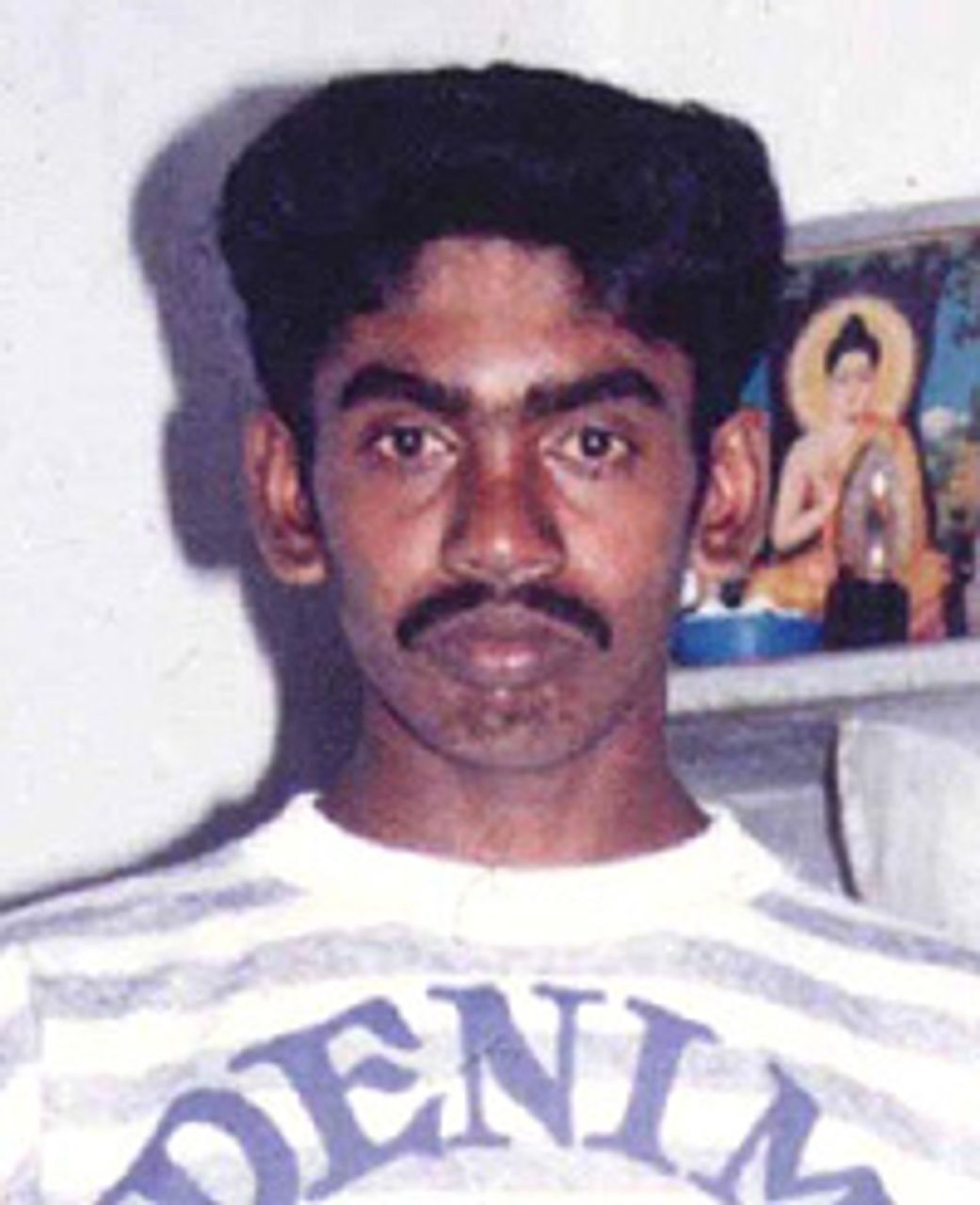 M. Nishantha
M. NishanthaPolice arrested M. Nishantha, a young three-wheel taxi driver, on the evening of July 3, alleging he was a drug dealer. Residents vehemently denied the claim. Having learnt that Nishantha had been badly beaten and disappeared in police custody, angry relatives and hundreds of local people thronged to the police station last Saturday evening in protest.
Hundreds of armed police and soldiers were mobilised to disperse the crowd, and then unleashed a reign of terror. Residents told the WSWS that security personnel in civilian clothes invaded the neighbourhood and began to assault unarmed people indiscriminately with clubs. Many houses and vehicles were attacked with iron clubs.
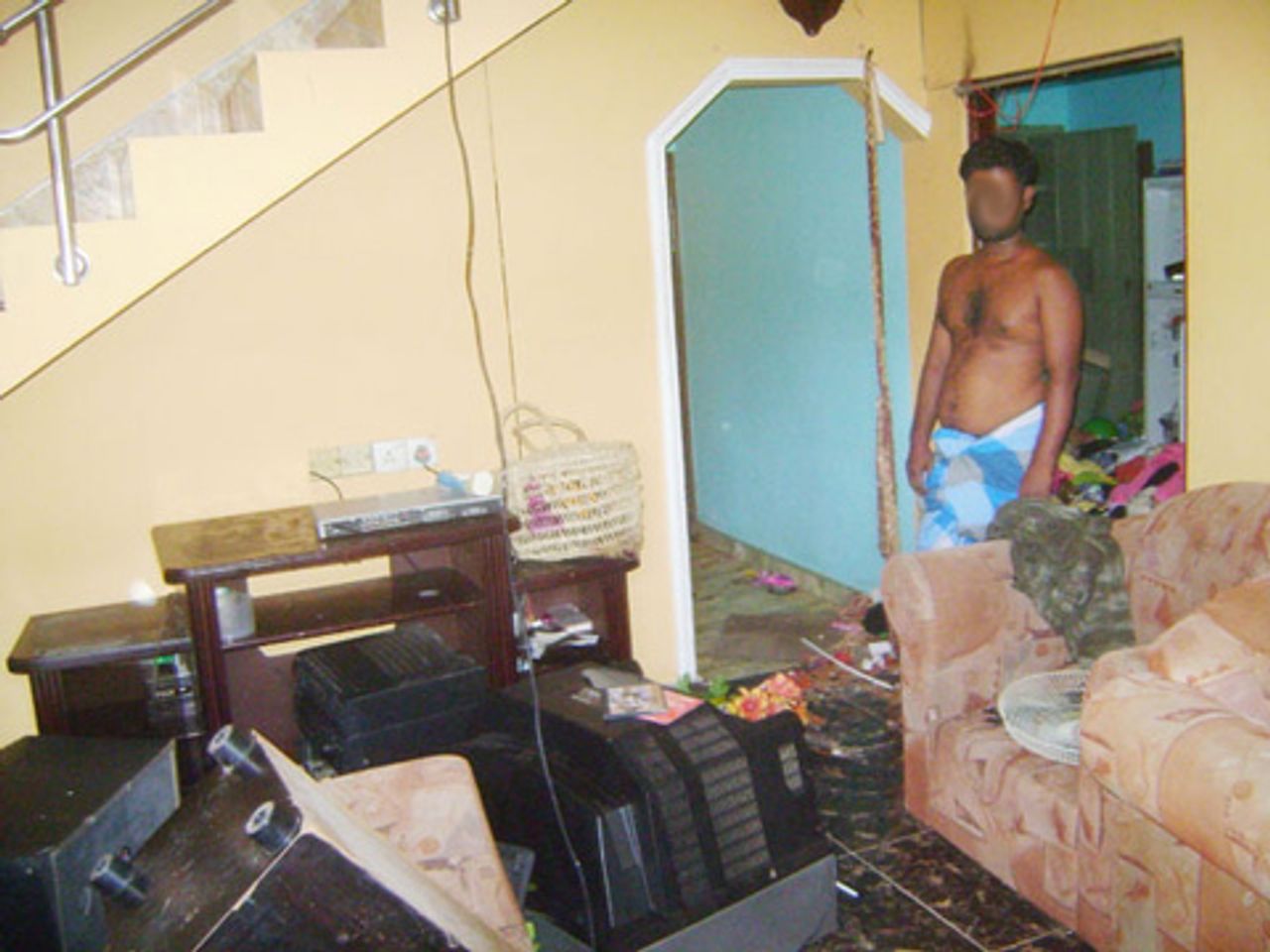 Television and furniture ruined in police attack
Television and furniture ruined in police attack“We pleaded with them not to assault us and damage our belongings. But they didn’t stop their attack,” a woman said angrily. “They continued while armed soldiers watched on,” she added. Boys were bullied and their hair forcibly cut. Security personnel looted some residents’ jewelry.
The following morning at 7.30, all residents in the area above the age of ten were summoned by the police to a nearby ground. Altogether, about 8,000 people from the localities of Summitpura, Gemunupura, Kadirana and Sri Wickramapura were rounded up. They were detained until 2 p.m., without being supplied any water, by around 1,000 police and security personnel who were stationed around the ground. Four masked men selected more than 200 people to be arrested.
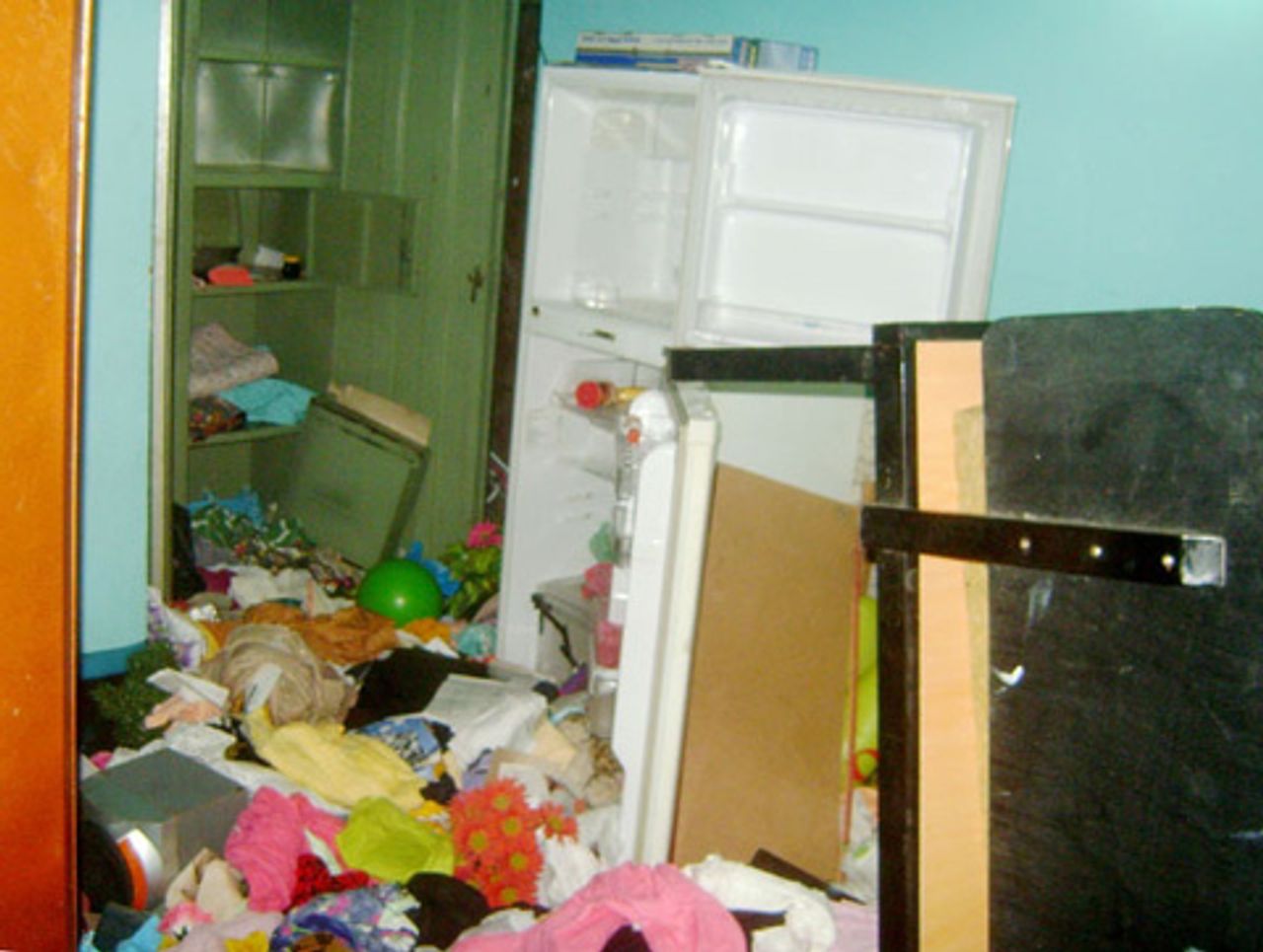 Home trashed in police raid
Home trashed in police raidThe entire operation recalled the roundups carried out in the north and east against Tamil civilians during the three-decade war against the Liberation Tigers of Tamil Eelam (LTTE). To this day, thousands of Tamils remain in military-run detention camps, and thousands more have been taken away to be imprisoned indefinitely, without trial, as “LTTE suspects”.
The Mattakkuliya operation demonstrates that the government utilised the civil war as a training ground for the development of new methods of repression to be used against the entire working class—Sinhala, Tamil and Muslim alike. Last weekend’s assault also resembles the roundups conducted by the security forces in 1989-1990 against rural youth in the country’s south, which resulted in about 60,000 killings.
The police sought to justify the operation by claiming that it was directed against drug dealers. At a press conference on Monday, Deputy Inspector General of Police (DIG), N.K. Illangakoon flatly denied there had been any attack on ordinary people. He said the suspect arrested was “a major associate” of a “drug kingpin and the underworld leader”. Illangakoon said that Nishantha was being held by the Police Narcotics Bureau. Nishantha’s mother, however, told the WSWS she has not seen her son since he was taken into police custody.
The Sri Lankan police are notorious for cooking up stories to legitimise their attacks. DIG Illangakoon did not say why the police had not arrested the “drug kingpin”. In an attempt to cover up the operation and defuse local anger, Inspector General of Police Mahinda Balasuriya has ordered the transfer of all the senior police officers in the area, as well as police at the local police station.
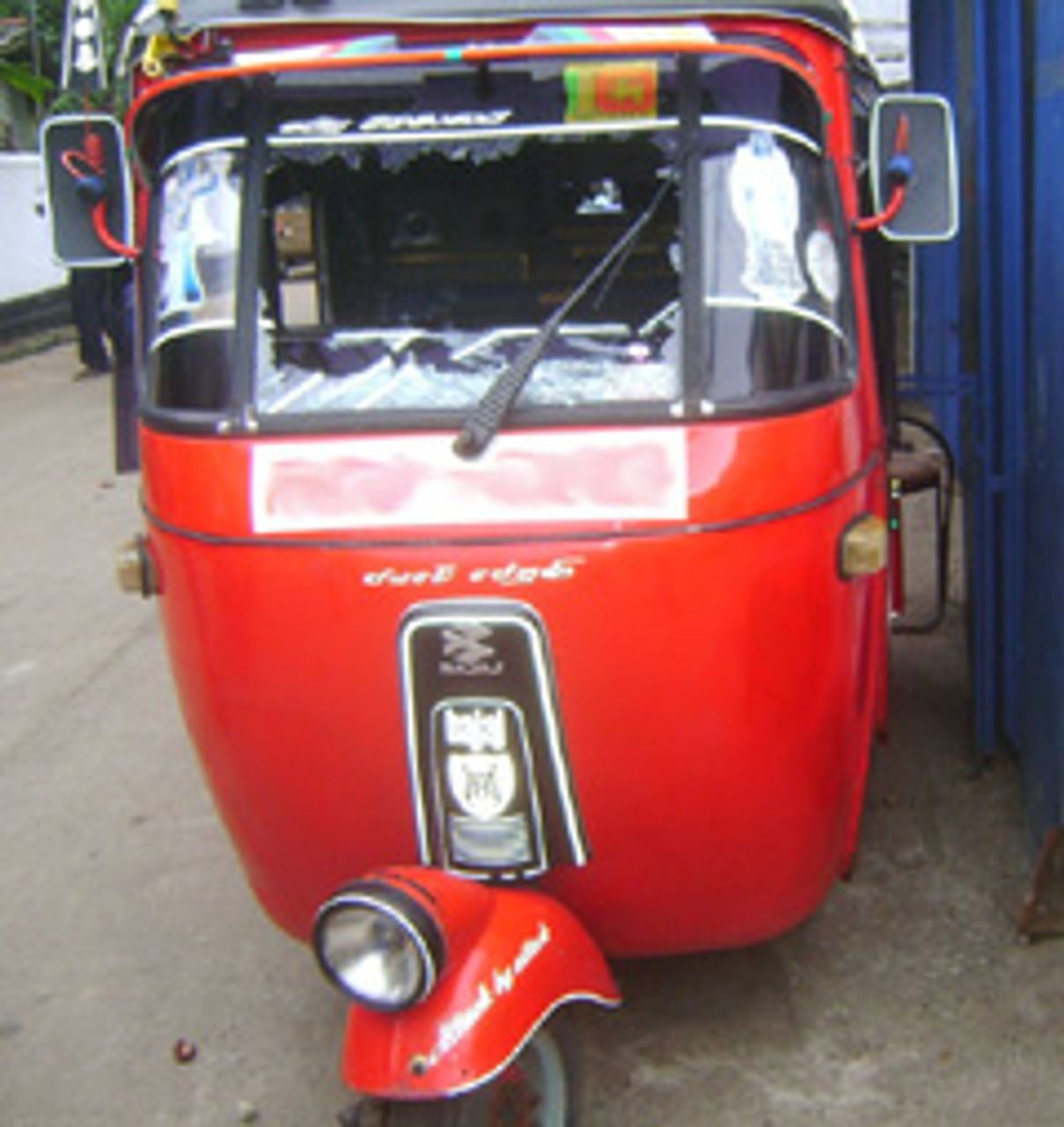 Three-wheeler with smashed windscreen
Three-wheeler with smashed windscreenContinuing their intimidation, the police asked the courts to rule that the arrested people be kept in custody for an identification parade. Defence lawyers objected that the police had produced no evidence of any damage to police property to sustain the charges laid. Magistrates granted bail to 176 prisoners but kept 25 on remand.
A local youth commented to the WSWS: “When the government launched the campaign of ‘Api wenuwen api’ [‘We are for us’] during the war [in the north and east], we were told that the soldiers were serving for us. Now we realise they are not for us.” Another young victim said people could now imagine how the security forces treated innocent people in the north during the war. “Who can believe the government’s claim that the security forces never committed war crimes?” he asked.
Summitpura was the most victimised neighborhood in the security forces’ rampage. About 6,000 families live there, including Sinhalese, Tamils and Muslims. Most families survive by working daily odd jobs. In 1976, they were dumped in Summitpura without any basic facilities after being forcibly evicted from other suburbs when the government cleaned up the city for a Non-Aligned Movement summit.
A retired worker told the WSWS: “People have been compelled to live in small huts built with wooden planks, tin sheets or coconut leaves for years. I built this house with the money withdrawn from my Employee’s Provident Fund.” Residents were not issued with any legal documents for the tiny plots of land they were allocated.
Nishantha, who was arrested by the police, lives with his mother, 64, and his 13-year-old daughter in a small house of about 12 square metres. He previously sold kerosene from a bullock cart. His mother is still working as a cleaning labourer. His wife went to work in Jordan three years ago, but had run away after being harassed by her employer and has been in a detention camp there for 18 months.
These impoverished people are among hundreds of thousands living in Colombo’s shanties. The Rajapakse government has drawn up plans to evict these slum dwellers from the city, saying they are living in “unauthorised” houses. In order to enforce the plan, the Urban Development Authority has been placed under the control of the defence ministry, headed by the president’s brother, defence secretary Gotabhaya Rajapakse.
Police-military mobilisations are no longer an exception in Sri Lanka, but the rule. In May, the defence ministry sent hundreds of police and army personnel to break up resistance and evict 45 families from central Colombo, and then demolish their houses. Over recent weeks, police have been mobilised to remove thousands of street hawkers in Colombo and other parts of the country.
Despite the end of the war in May 2009, the Rajapakse government has maintained emergency rule, which gives sweeping powers to the police and military, in order to suppress mass opposition and resistance as it implements the drastic austerity measures required to meet the terms of a $US2.6 billion loan from the International Monetary Fund.
The Colombo media has echoed the police version of the assault on Mattakkuliya residents, continuing its cover up of the mounting attacks on basic democratic rights. Not a single parliamentary party, including the right-wing United National Party (UNP) and the Sinhala extremist Janatha Vimukthi Peramuna (JVP), has commented on the Mattakkuliya operation, revealing their complicity with preparations for a police state.
The Mattakkuliya operation is a sharp confirmation of the warnings issued by the Socialist Equality Party and the WSWS: that the government will use the military machine, built up during decades of civil war, against working people throughout the country to impose the burden of the deepening global crisis of world capitalism on their backs.
The authors also recommend:
Sri Lankan government speeds up slum evictions in Colombo
[July 9, 2010]
Sri Lankan government prepares major constitutional changes
[June 24, 2010]
Sri Lankan military takes over urban development
[May 13, 2010]
